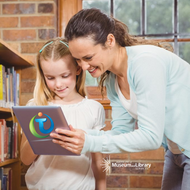
(View Complete Item Description)
Objective: Using your school’s local version of ISearch, students will gather and cite information from multiple texts and diverse media and draw on information from multiple print or digital sources.Note: If students do not know what a primary source document is and why researchers use them, you may wish to tell them that primary source documents include letters, diaries, journals, interviews, transcripts, speeches, and pamphlets. Researchers and historians use them as first-hand accounts of something that happened at a certain point in time.Instructions: Use the ISearch BINGO card and one of the three worksheets to teach students how to use ISearch to find academic sources. Worksheet A introduces students to the ISearch interface. Worksheet B introduces students to the ISearch interface by comparing it with another search tool of your choosing. Worksheet C introduces students to the ISearch interface and requires students to cite sources correctly in an annotated bibliography.Distribute the ISearch BINGO Worksheet of your choosing (A, B, or C) for Grades 6-8.Encourage students to read all directions along with you first so you can help them understand.Demonstrate how to use ISearch to find sources and how to create citations or find citation helpers. See demo instructions.Pass out the BINGO cards. Explain how to get a BINGO. Tell students that they can choose any of the topics in the box as a search term when looking for that source. They can mix and match. In other words, a student can do a search for civil rights for B1 and suffrage for I6, or the student could do civil rights across the row.ModificationsEncourage students to work in teams to find the sources.Change the search terms in the BINGO card to relate to those with a current classroom assignment.Time Required: Activities in Worksheet A can be completed in 25-45 minutes. Activities in Worksheet B can be completed in 45-65 minutes. Activities in Worksheet C can be completed in 90 minutes.
Material Type:
Lesson Plan
Author:
Erica Clay




















